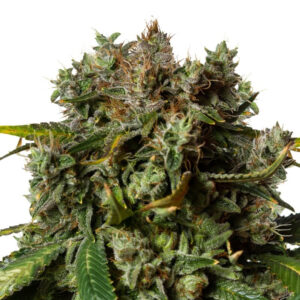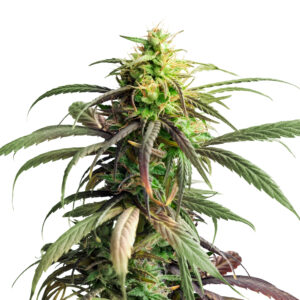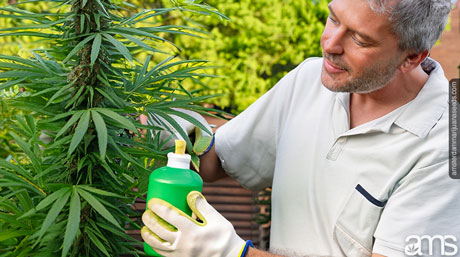When people think of cannabis, the first things that come to mind are often the effects of vaping or smoking it—whether for recreational use or medicinal purposes. However, the cannabis plant is far more versatile than many realize. Beyond inhalation, there are numerous ways to incorporate this powerful plant into your lifestyle, and one of the lesser-known methods is consuming it raw. Yes, you can eat cannabis in its raw form, and doing so offers a range of health benefits that go beyond what you might expect from traditional methods of consumption. From its rich nutritional value to its unique chemical composition, raw cannabis is a superfood in its own right.
The cannabis plant is packed with nutrients that can significantly contribute to a healthy diet. When consumed raw, cannabis retains its full spectrum of vitamins, minerals, fibers, proteins, and antioxidants—elements that are often lost when the plant is heated or processed.
One of the most compelling reasons to consider consuming raw cannabis is the presence of cannabinoid acids, specifically CBDA (cannabidiolic acid) and THCA (tetrahydrocannabinolic acid). These compounds are the precursors to the cannabinoids CBD and THC, which are typically associated with the therapeutic and psychoactive effects of cannabis.
Terpenes, the aromatic compounds that give cannabis its distinct smell and flavor, are another reason to consider eating raw cannabis. When cannabis is smoked or vaporized, many of these delicate compounds are destroyed by the heat. However, when consumed raw, the terpenes are preserved, allowing you to benefit from their full therapeutic potential.
One of the most significant differences between consuming raw cannabis and using it in other forms is the absence of psychoactive effects. This is because, in its raw state, cannabis contains THCA instead of THC. The lack of decarboxylation means that the plant’s psychoactive properties are not activated, allowing you to enjoy the health benefits of cannabis without experiencing a high.
This non-psychoactive nature of raw cannabis makes it an appealing option for those who are interested in the plant’s therapeutic benefits but do not wish to experience the mind-altering effects commonly associated with cannabis use. It is particularly beneficial for patients seeking relief from conditions like inflammation, anxiety, or chronic pain without impairing their cognitive function.
Incorporating raw cannabis into your diet is easier than you might think. The fresh leaves and buds can be used in a variety of dishes, adding both nutrition and flavor. Here are a few simple ways to start:
The health benefits of raw cannabis are vast and still being explored by the scientific community. While more research is needed to fully understand the potential of raw cannabis, its rich nutritional profile and therapeutic properties make it a valuable addition to a healthy diet. Whether you’re looking to boost your intake of vitamins and minerals, reduce inflammation, or simply explore a new way to enjoy cannabis, eating it raw offers a unique and healthful experience.
So, why not experiment with raw cannabis? Start by adding it to your smoothies, salads, or juices, and discover the surprising health benefits for yourself. Remember, as with any dietary change, it’s important to listen to your body and consult with a healthcare professional if you have any concerns, especially if you are using cannabis for medicinal purposes.
Raw cannabis is much more than just an untapped resource; it’s a nutritional powerhouse with a unique blend of vitamins, minerals, fibers, and cannabinoids that offer significant health benefits without the psychoactive effects. By incorporating raw cannabis into your diet, you can take advantage of these benefits in a natural, and holistic way. As the scientific community continues to explore the potential of this incredible plant, it’s clear that raw cannabis has a lot to offer, making it a worthwhile addition to your wellness routine. Whether you’re a seasoned cannabis user or someone new to the plant, eating it raw opens up a world of possibilities for health and well-being.
No, eating raw cannabis does not make you high because it contains THCA, which is non-psychoactive. The psychoactive effects of cannabis only occur when THCA is converted to THC through heating (decarboxylation).
Raw cannabis is rich in nutrients like fiber, vitamins, minerals, and antioxidants. It also contains cannabinoid acids like CBDA and THCA, which have anti-inflammatory, anti-nausea, and neuroprotective properties.
You can easily add raw cannabis to your diet by blending it into smoothies, mixing it with salads, or juicing the leaves with other vegetables for a nutritious drink.













Related Posts

Seaweed is a highly nutritious and natural fertilizer for your cannabis plant. It is packed with beneficial nutrients and vital minerals that ensure maximum health, vitality, growth, and high yields. Seaweed extracts are especially beneficial for your cannabis plants, as they protect them from defects that can ruin their health. So you get bigger, stronger, and well-developed plants. For instance, Kelp, an algae seaweed, possesses more than 60 trace elements that boost the health of your cannabis plants and improves their tolerance to pests, diseases, and stress!

With all the ‘superfoods’ going around, people are wondering whether eating raw weed has any benefits instead of smoking it. There are two main reasons people use weed: to get therapeutic effects or recreational purposes.

Like all other CBD products, food can help improve your life balance. CBD has a unique interaction with our endocannabinoid system (ECS), a system that is closely linked to many internal processes.